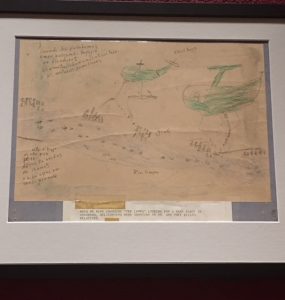In the first few weeks of Term 2, our ASTU class has been focusing on understanding different theories of memory noted by various scholars, including Psychologist William James and Sigmund Freud. We have also spent classes analyzing how characters from Hemingway and Mrs. Dalloway showed connections with the views that the above scholars had on consciousness and trauma. I found it interesting to read my classmates’ blog posts and realized that some linkages could be made between them.
Patrick’s blog focuses on James’ view on “stream of consciousness,” in which the scholar, later on, compares it to a “bird’s life” due to the transitive and substantive thoughts we present in daily life (178). He also realized that both James and Freud supports the idea that dreams are created not from instincts, but because our conscious brain is still processing information when we are asleep. Similarly, Tessa draws connections between the views of the two scholars on consciousness and trauma and finds that their opinions complement each other. For instance, James describes consciousness in a way that applies to Freud’s explanation on how trauma leads to people’s experience of Post-Traumatic Stress Disorder (PTSD), or in other words, “Shell Shock.” Another point I found interesting in her blog was her extended thoughts towards sociology on whether such repetitive actions are based on free will or uncontrollable in one’s life.
The discussion of PTSD was also mentioned in other classmate’s blogs, where Moha and Aleksei both precisely explained the symptoms of this disorder to aid our understanding when relating it with characters in Hemingway and Mrs. Dalloway. Our class has been talking about PTSD post World War I, and Kriveena successfully links this to war and her thoughts. In specific, the character Septimus Warren Smith in Mrs. Dalloway, who was a war veteran in WWI, faces PTSD after the war ended. Kriveena was aware that Septimus suffered from severe hallucinations after his friend Evans died during the war. The trauma affected Septimus’ emotions and prevented him from controlling his thoughts, which thus led to his experience in PTSD. She also sees his case in a broader view, explaining that PTSD and other mental disorders are seen as a threat in modern society.
In the linkage from the past and present society, Isabel has done a great job in explaining how mental health is being treated in Canada nowadays. It is clear that people’s attention to mental disorders has increased, and that “Bell Let’s Talk” day has been effective in encouraging people “to end the stigma and start a conversation.” Despite mentioning about how mental health is treated in our current country, Isabel also shares her own experience in dealing with stress and encourages her classmates to seek help when they are feeling “low.”
In relation to the “Theory of Omission” discussed in class, Etana emphasizes that concepts learned could apply to both literary works and our daily life. She explains that people do not often fully express themselves and leaves room for other’s interpretation. With regard to her personal experience, she reflects on how those who care, especially her close friends, would spend extra effort to understand the meaning of her words and discover such mysterious message deep inside her.
The discussion of consciousness and trauma is never neglectable in our lives, and it does affect us in different ways. As a student who is highly interested in Psychology, I found such concepts very thought-provoking. The way our class examines memory by referring to PTSD and other mental health issues, as well as its correlation to literary works and modern society, inspires me in pursuing my career as a Psychologist. Thus, I would like to once again remind us of the importance of seeking help when needed in university to prevent ourselves from becoming another Septimus!
P.S. The blogs done by our classmates this week were really fascinating and unique, it would be great if you take a look of what they wrote during your free time!!!
Citations:
James, William. “The Stream of Consciousness.” Psychology., pp. 151–175., doi:10.1037/11060-011.


